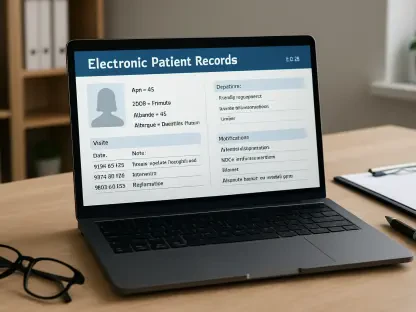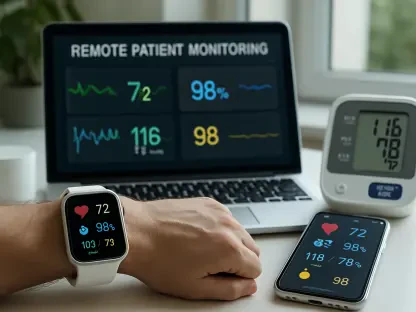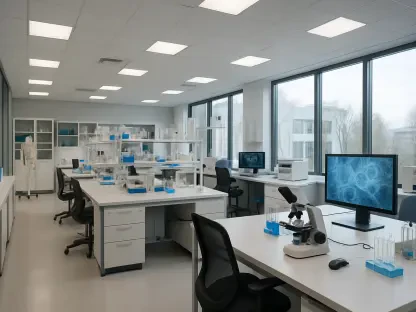In the evolving healthcare landscape, telemedicine has emerged as a pivotal technology poised to transform how medical services are delivered, particularly in fields such as neurology. With its potential to provide specialized care to patients in diverse and remote locations, telemedicine has become increasingly crucial. Telemedicine carts epitomize this advancement, serving as comprehensive platforms that facilitate real-time consultations, diagnostics, and monitoring across distances. They offer enhanced mobility and functionality, enabling neurologists to extend high-quality care beyond traditional boundaries. As telemedicine becomes an integral part of medical practice, the focus has shifted toward identifying the best-equipped telemedicine carts tailored for neurology. The following exploration will delve into the essential aspects and leading options in telemedicine carts that are revolutionizing neurology care.
Importance of Telemedicine in Neurology
The integration of telemedicine in neurology has transformed how neurological disorders are diagnosed, monitored, and treated. This technological evolution allows for immediate patient consultations, even during emergencies where time is critical. Neurology, a field reliant on quick and precise intervention, benefits immensely from telemedicine’s ability to bridge geographical gaps. Telemedicine carts play a crucial role in this ecosystem by facilitating seamless interactions between patients and neurologists. They enable the use of pertinent medical equipment such as EEGs (electroencephalograms) and EMGs (electromyograms), crucial for accurate diagnoses and monitoring. In tele-neurology, where mobility and accessibility are crucial, these carts ensure neurologists can offer expert care without any latency. This translates to enhanced patient outcomes, diagnostic accuracy, and the timely administration of medical interventions. The efficacy of telemedicine in neurology is underscored by its ability to bring specialized care into settings such as patients’ homes or remote clinics, where such expertise might otherwise be inaccessible.
Moreover, telemedicine carts facilitate a crucial shift in healthcare dynamics by supporting a more collaborative model of care. Rather than being isolated by geographical constraints, neurologists can work in tandem with local healthcare providers to deliver optimized care plans. In emergency settings, telemedicine carts are indispensable, allowing instant assessment and treatment decisions that can significantly impact patient survival and recovery rates. This collaboration is vital for delivering comprehensive neurological care, as neurologists can access and review patient data in real-time, make informed decisions, and interact directly with patients. As the prevalence of neurological conditions rises with the aging population, telemedicine presents an opportunity to meet the growing demand for neurological services efficiently and equitably.
Characteristics of a Good Telemedicine Cart
For telemedicine carts to effectively support neurology care, they must encompass several critical features and capabilities. Integration with essential neurology devices like EEG and EMG is a fundamental prerequisite, ensuring these carts provide the technological foundation for advanced diagnostics and treatment. The ability to integrate these devices with telemedicine carts allows neurologists to perform detailed examinations and monitor patient conditions remotely, thus overcoming the physical barriers that typically limit access to specialized care. Furthermore, a robust telemedicine cart should also support a secure and user-friendly interface, enhancing usability for both healthcare providers and patients. This involves ensuring all data transmissions are protected and that the hardware and software components are intuitive and straightforward to operate, minimizing technical hurdles.
Another significant feature is the adaptability of telemedicine carts to various clinical environments, from crowded urban hospitals to isolated rural clinics. This versatility requires carts to be mobile, durable, and equipped with extended battery life to maintain functionality in diverse settings. In addition to physical mobility, a good telemedicine cart should facilitate high-quality video conferencing capabilities, allowing for clear, real-time communication that is crucial in neurological assessments. Providing consistent video and audio quality ensures neurologists can detect subtle signs and symptoms that might influence a diagnosis. Finally, telemedicine carts should offer seamless connectivity and integration with existing hospital information systems, enabling smooth transitions of care and ensuring that patient records are up-to-date and readily accessible.
Three Best Options for Telemedicine Carts
TeleSpecialists have established themselves as a frontrunner in telemedicine carts tailored for neurology, particularly through their transformative telemedicine solutions. Founded by physicians, TeleSpecialists boasts a comprehensive service utilized across numerous hospital locations, catering extensively to TeleNeurology and TelePsychiatry. What sets their offering apart is the streamlined user interface and two-way video platform, supported by full-time IT assistance to address technical challenges swiftly. This focus ensures that hospitals receive bespoke services, aligning with their specific mission and operational needs. Such precision is crucial in neurology, where even minor oversights can lead to significant implications in patient care.
TeleMed Global represents another top-tier option, known for its adaptability and wide-ranging telehealth solutions. Situated in Colorado, this company excels in providing telehealth carts that accommodate clinical, operational, and financial requirements across various applications, be it hospitals, schools, or remote areas. Their emphasis on seamlessly integrating medical devices and advanced videoconferencing exemplifies their commitment to facilitating immediate and effective patient care. TeleMed Global’s comprehensive approach leverages a vast pool of collective experience in healthcare technology, ensuring their products are at the forefront of innovation while remaining practical for everyday use. This combination of technology and practicality empowers neurologists to extend their reach and enhances their ability to provide continuous care.
Another notable contender is Advantech, a company deeply rooted in technological innovation and resource development. Their telemedicine cart, the AMIS-50E72CSL0KN50, is characterized by its cutting-edge features designed for remote patient monitoring. This includes an all-in-one PC and a 21.5-inch touchscreen that facilitates easier interaction and data visualization for both the healthcare provider and patient. Importantly, this cart supports sustained functionality even in underserved areas, highlighting its relevance in settings where resources may be limited. Such capabilities ensure neurologists can perform vital tasks without interruption, thereby maintaining the continuity of care. Collectively, these telemedicine carts exemplify the advancements in technology that are making specialized neurological care more accessible and efficient for a broader patient base.
Unifying Trends in Telemedicine Carts
The rising prominence of telemedicine carts in neurology care epitomizes a broader trend toward more dynamic, patient-centered healthcare solutions. These carts are indispensable not only in enhancing the quality of care but also in augmenting the capacity for remote intervention, which has become a cornerstone of modern medical practice. In emergency situations, the swift access to neurological expertise provided by telemedicine carts can mean the difference between life and death, underlining their vital role in healthcare environments. The convergence of technological sophistication with ease of use exemplifies how telemedicine is bridging gaps in access and efficiency in healthcare.
Moreover, the integration of telemedicine carts with existing hospital systems highlights the need for interoperability and seamless transitions of care. This functional integration ensures that neurologists can access complete patient records and data, promoting informed decision-making and comprehensive patient management. There is also an increasing demand for telemedicine carts that are flexible enough to cater to a broad spectrum of needs, from neurological assessments to psychiatric evaluations, thereby supporting a holistic approach to healthcare delivery. The shared characteristics among leading telemedicine carts indicate an industry-wide push towards creating versatile, efficient solutions that extend quality care across different medical disciplines.
Collectively, the advancements in telemedicine carts reflect a commitment to harnessing technology to improve health outcomes, particularly in specialized fields like neurology. As telemedicine continues to evolve, the role of these carts in facilitating effective, timely, and accessible care will only expand, reaffirming their status as essential tools in contemporary healthcare. By combining innovation with practicality, telemedicine carts are not only transforming neurology care but are also setting a precedent for how medical services can be delivered in increasingly diverse and challenging environments. The strategic implementation of these tools is essential for ensuring that healthcare services remain efficient and responsive to the needs of patients worldwide.
Conclusion: Future of Telemedicine Carts in Neurology
Telemedicine’s integration into neurology has revolutionized the diagnosis, monitoring, and treatment of neurological disorders. This technological advancement allows for immediate consultations, including during critical emergencies. Neurology, a discipline that depends on swift and accurate interventions, greatly benefits from telemedicine’s power to overcome geographic limitations. Telemedicine carts are pivotal in this system, facilitating smooth communication between patients and neurologists. These carts support the use of essential medical tools like EEGs (electroencephalograms) and EMGs (electromyograms), ensuring precise diagnoses and monitoring. In the realm of tele-neurology, where mobility and accessibility are paramount, these carts enable neurologists to provide expert care without delay, leading to improved patient outcomes and timely treatments. Telemedicine’s strength in neurology lies in bringing specialized care to places like patients’ homes or isolated clinics, where such expertise might be lacking. Additionally, telemedicine carts promote a collaborative healthcare model, enabling neurologists to work alongside local providers, thereby optimizing care plans.









